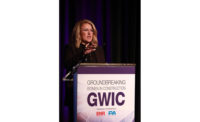Ten years after an original $8.7-billion Trans-Hudson River passenger rail tunnel project got stopped in its tracks by then-New Jersey Gov. Chris Christie (R), version 2 has hit a snag under President Donald Trump’s proposal that rates it ineligible for federal Capital Investment Grants.
The $12-billion Hudson River Tunnel, currently in preliminary engineering, received a “low” rating from the Federal Transit Administration on Feb. 10 based on scores for current financial conditions, funding commitments and reasonableness of financial plan.
The tunnel would replace a now 109-year-old tunnel that is a critical link for Northeast Corridor rail traffic and also sustained damage during Superstorm Sandy in 2012. The region served by the corridor accounts for 20% of the national GDP, according to estimates.
Another key rail link project that is part of the so-called Gateway Program—the $1.6-billion Portal North Bridge over New Jersey’s Hackensack River that would replace a 110-year old span that carries up to 200,000 travelers per day—received a medium-high rating, rendering it eligible for Core Capacity grant funding.
The Gateway partners — Amtrak, New Jersey Transit and the Port Authority of New York and New Jersey — submitted a new plan last year that cut the tunnel price tag from more than $13 billion. Preliminary engineering is at about 30%, and project officials have been waiting two years for the U.S. Dept. of Transportation to review its draft Environmental Impact Statement, says Craig Shulz, a spokesperson for Amtrak.
The EIS was completed in about two years, faster than typical because engineers were able to work off documents from the original tunnel plan. But not much more can happen without a Record of Decision based on the feds approving the EIS, and on the partners securing more definitive sources of funding.
In a statement, Steven M. Cohen, chair of the non-profit Gateway Program Development Corp. that is overseeing the program, said, “The Department of Transportation continues to ignore the most urgent infrastructure project in the nation, despite our clear improvement to the plan to finance and build the Hudson Tunnel Project. We reduced the estimated cost by $1.4 billion, secured hundreds of millions in additional funds from Amtrak, and decreased our grant request of the federal government from 49% of the project to 44%.
Emphasized Cohen: "Despite these efforts, the Hudson Tunnel Project remains mired in federal bureaucracy.”
“It is unacceptable that we have yet to receive a definite timeline for completion of the environmental review,” eight Northeast senators said in a Feb. 6 letter to Federal Railroad Administrator Ronald Batory. “We implore you to provide an update on when we can expect a final EIS and ROD for the Hudson Tunnel Project – including confirmation of the remaining steps necessary to move the project into the design and construction phases.”
The U.S. DOT has denied allegations of political bias against the heavily Democratic states and has said the tunnel needs more financial commitment and specific identified sources from New York and New Jersey. Both states have pledged more than $5 billion.
He noted that the original two-tube tunnel has experienced frequent problems, including an electrical issue at the beginning of the month that caused cancellations and delays to thousands of daily commuters.
In a Feb. 2019 report, the Regional Plan Association estimated that if the old tunnel shuts down before the new one is built, it would cost the national economy $16 billion over four years.
Gateway officials cheered the medium-high rating for the bridge, which is in final design and for which some $20 million in preliminary construction has already begun, such as utilities and geotechnical borings, says Schulz.
The bridge construction project will be about 2.44 miles, including a 3,660-ft approach span located on the west side of the river, a 2,540-ft-long approach span on the east side and a 1,200-ft long center span crossing directly over the Hackensack River, according to the Gateway Program website.
The new fixed-span bridge will double the existing underclearance to about 500 ft. The old steel bridge has a 300-ft swing span that must open and close to marine traffic. The new bridge is expected to increase capacity by 30%, says Schulz.
The tunnel would include three sections—an underground section of solid rock conditions in the Palisades, mixed-ground conditions under the river and a section under Manhattan connecting to Penn Station.
The Gateway partnership set up a “virtual data room” where interested contractors can view results of ongoing geotechnical tests, says Schulz. “We’re all working to do everything we can to advance these projects,” he says.




